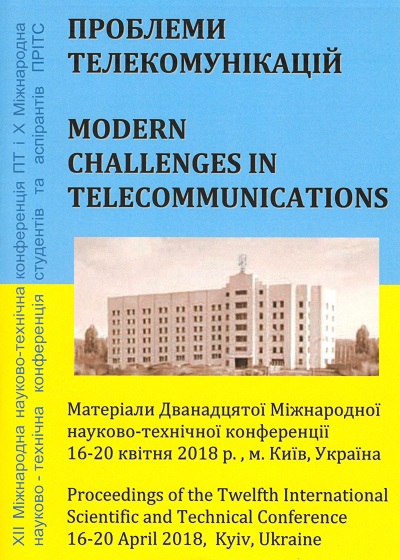INFLUENCE OF FADINGS ON THE COMMUNICATION CHANNEL AND METHODS OF RESISTING THEM IN THE MULTIPLAYER SYSTEM OF DVB-T2 STANDARD
Анотація
ВПЛИВ ЗАВМИРАНЬ НА КАНАЛ ЗВ’ЯЗКУ ТА МЕТОДИ БОРОТЬБИ З
НИМИ В МУЛЬТИСЕРВІСНІЙ СИСТЕМІ СТАНДАРТУ DVB-T2
В даній статті описується вплив багатопроминевості на наземній канал телевізійного мовлення. Розглянуто основні методи забезпечення працездатності каналу, а також описано методи боротьби з завмираннями в мультисервісній системі стандарту DVB-T2.
This article describes the multidimensional effects of the terrestrial television broadcast channel. The basic methods of ensuring the efficiency of the channel are considered, as well as methods of fading resisting in the DVB-T2 multiservice system.
Посилання
Беспроводная цифровая связь. – К. Феер, Москва, “Радио и связь”, 2000.
Digital Video Broadcasting (DVB); Implementation guidelines for a second generation digital terrestrial television broadcasting system (DVB-T2). – Draft ETSI TS 102 831 V1.2.1 (2012-08).
Frame structure channel coding and modulation for a second generation digital terrestrial television broadcasting system (DVB-T2). – Draft ETSI EN 302 755 V1.4.1, February 2015
##submission.downloads##
Як цитувати
Номер
Розділ
Ліцензія
Авторське право (c) 2018 Valeriy Yuriivna Solianikova

Ця робота ліцензується відповідно до Creative Commons Attribution 4.0 International License.
Authors who submit to this conference agree to the following terms:a) Authors retain copyright over their work, while allowing the conference to place this unpublished work under a Creative Commons Attribution License, which allows others to freely access, use, and share the work, with an acknowledgement of the work's authorship and its initial presentation at this conference.
b) Authors are able to waive the terms of the CC license and enter into separate, additional contractual arrangements for the non-exclusive distribution and subsequent publication of this work (e.g., publish a revised version in a journal, post it to an institutional repository or publish it in a book), with an acknowledgement of its initial presentation at this conference.
c) In addition, authors are encouraged to post and share their work online (e.g., in institutional repositories or on their website) at any point before and after the conference.

